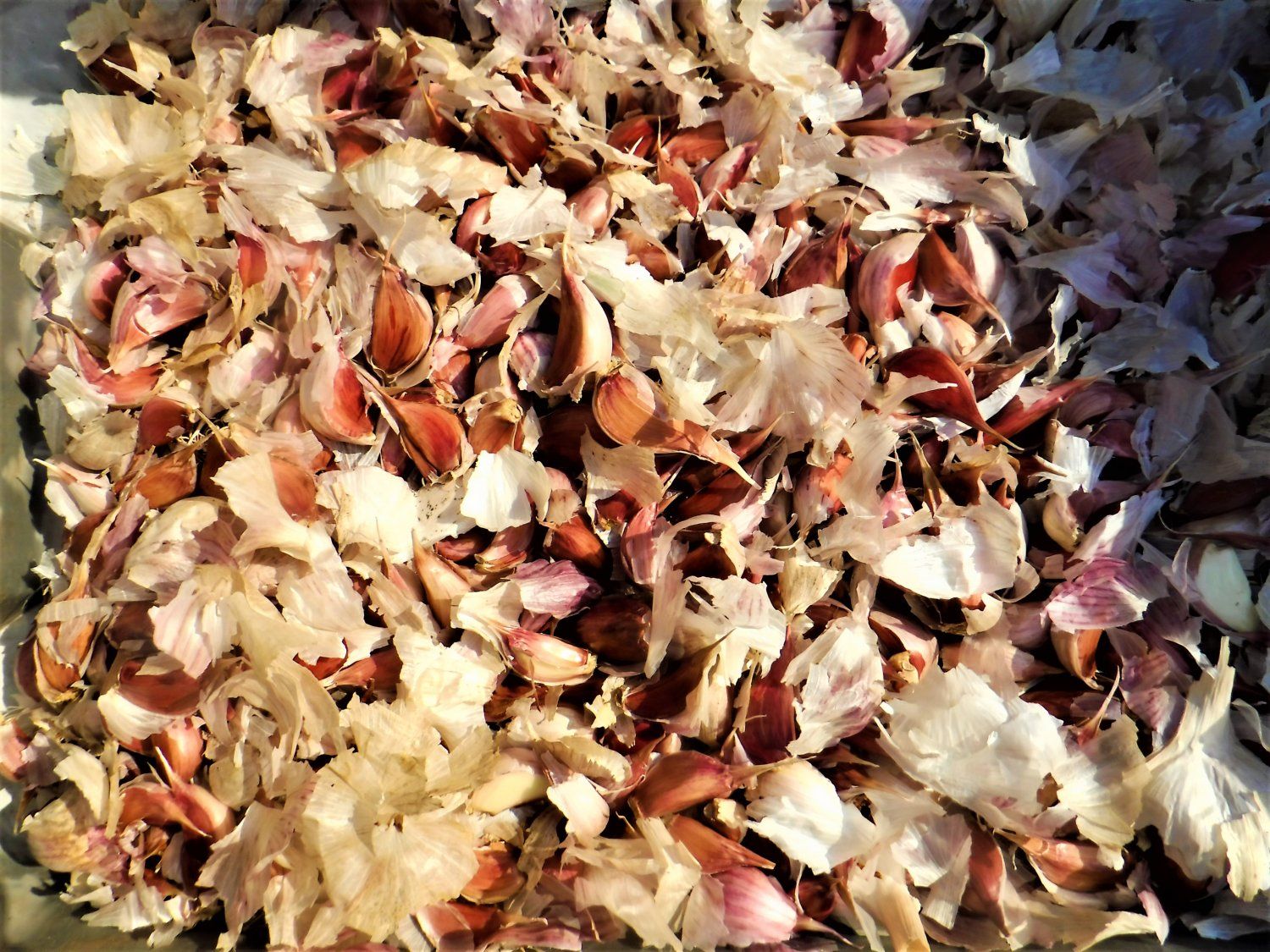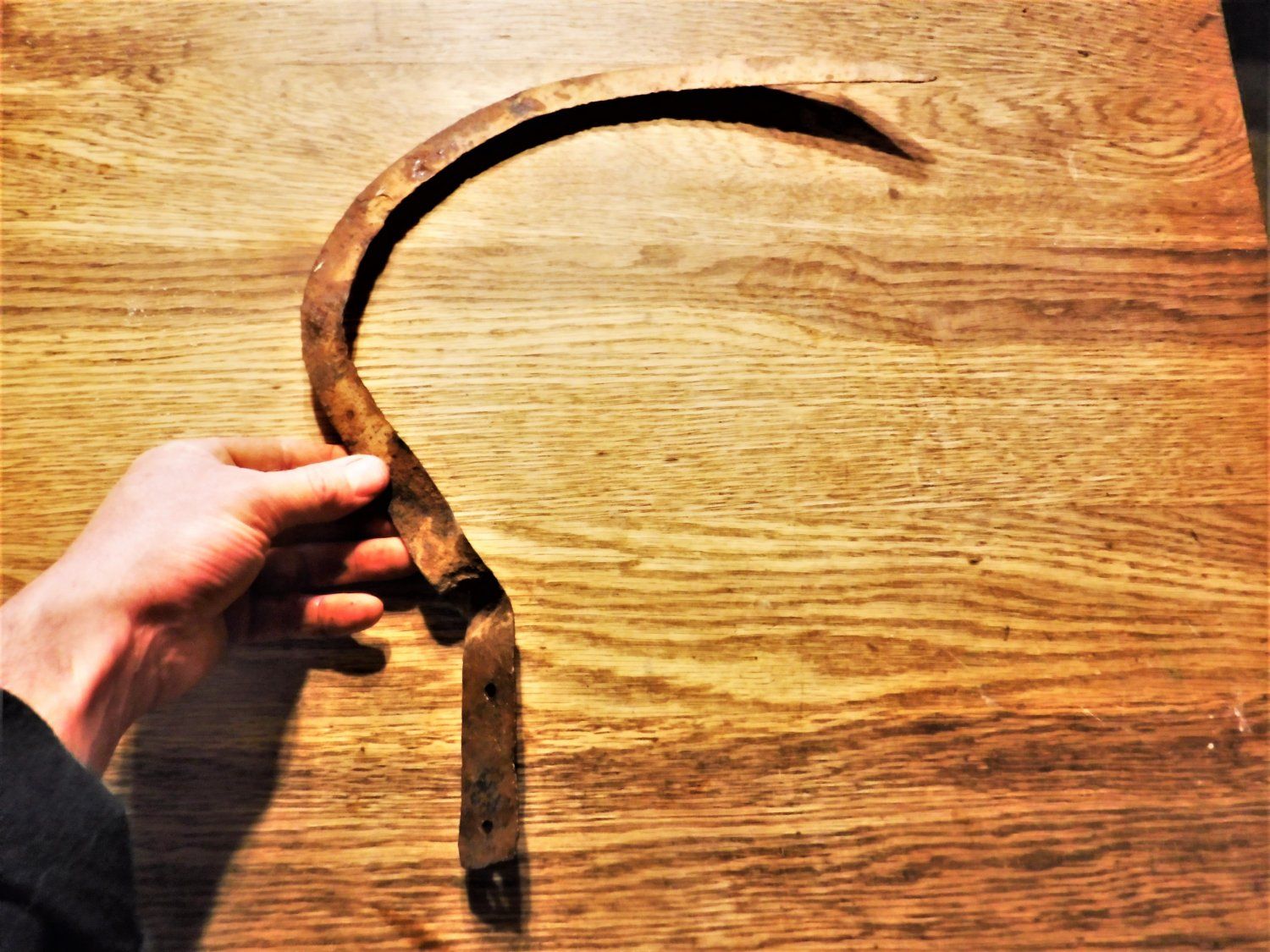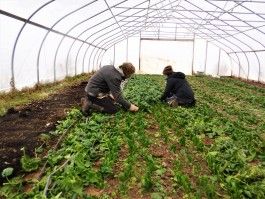Winter seems like it is finally arriving now. Lows possibly below zero early next week, and (fingers crossed!) our first accumulating snowfall this weekend. Now that we finished planting all of our garlic, we have been getting the farm into winter mode: moving cultivating tractors into hoophouses for winter storage, getting implements put away, and putting the tire chains and snow plowing implements on The Legendary 180, our big tractor.
Significant snowfall means staying on top of plowing around the hoophouses to keep them structurally sound. If snow builds up around the sides of the hoops, the snow on top can't slide off, and that extra weight can make the structure collapse. Knock on wood, we haven't had any hoophouse collapses in the nearly 20 years we have been growing in them, but we know fellow farmers in our region who have had snow damage.
As much as I love snow, every day of new, accumulating snowfall means up to 15 hours of plowing here around the farm. One day it would be nice to have a tractor with a heated cab for winter snow removal, but for now we're out in the weather when we plow. In case you were wondering what farmers do in the winter... bundle up and drink hot chocolate till the work is done.
Today (Friday), we will be harvesting the last of our fall planted spinach for your veggie boxes. Spinach leaves can take some mighty cold temps, but the smaller leaves tend to take the cold a lot better than the larger ones that we have now. The bitter cold coming in next week will mean it's too cold to harvest in the hoophouse as well, so we're picking it all today instead of waiting until next week to harvest.
Don't worry - even though it will have been harvested 3 days earlier this week, quality will still be top notch, and it should be good for at least a week after you receive it. The spinach that gets shipped out from California on the grocery store shelves is usually at least a week old before it even gets to the supermarket, never mind the time it takes to be purchased and eaten, so we're still coming out on top. Plus with our cool temps that spinach is so sweet now!
We've been doing a lot of culling when harvesting our spinach this fall due to caterpillar damage. I have never seen fall spinach have caterpillar damage that was significant before - the cold temps usually do the little buggers in for us, and that is that. This fall the temps have been more mild, and the additional heat has given the cutworms a chance to hatch another round of larvae.
We saw a little damage earlier in the fall, but figured the cold temps would take them out. We even decided not to use row cover to protect the spinach leaves and left the spinach hoophouse wide open at the ends instead of closing it up to keep the temps colder to freeze them out as fast as possible. But STILL we are seeing them, despite having temps in the low teens so far this fall! They freeze up, but then thaw out and keep munching when the temps warm up again.
Longer warm seasons that allow bugs additional reproduction cycles are just one more challenge of climate change facing all farmers across the globe. So, if you have noticed a few holes in your spinach leaves, now you know why. Thanks for your understanding.
Once the spinach is harvested this week, it won't begin regrowth until Feb/March, but we'll still have lots of microgreens all winter long for fresh, delicious, and nutritious green veggies. Our new bigger microgreen room is up and running nicely. If you are not a "big veggie eater" that's fine - stick those micros on a burger or just add them as a small side to your meal. They are packed with both nutrients and flavor, and a little goes a long way. If eating big salads is more your thing, try the pea shoots - they are mild and can be cut up like lettuce and topped with whatever you like for a great winter salad.
This week, our new carrot bed lifter arrived! It's a brute of an implement, designed to run a long blade underground about 12" deep across the width of the bed of carrots. This way the soil will be loosened and the carrots can just be pulled out by hand - no forking necessary!
We had a different model a few years back - a shop-made version - that sadly had a hard time getting the blade in the ground, and tended to slice off the carrots instead of running fully beneath them. So, we sold it to another farm with lighter, sandier soil where that would not be an issue. Gotta love our clay-based soil up here in the Northwoods! We talked to other farmers across the Midwest and beyond who said the large black ripper shanks on either side of this bar will help the implement bite into the ground and solve that problem.
You can see the underside of the blade in the picture above, the part that will be running below the carrots. And the blade is currently at a steeper angle than when it will be used. There are 2 "shear pin" bolts on either side of the blade arms which are not in place yet, thus the steeper blade angle. Once bolted in place, if the implement hits a big rock, those bolts will break and the blade will fold backwards. This way we will only have to replace a few bolts instead of potentially damaging the entire implement in case of an underground obstruction. Good engineering.
We'll put it to the test on the 2022 carrot crop next summer and find out for ourselves, but from the feedback we got I think it should do the job nicely and save our backs from forking out all those carrots. We want to take care of our bodies so we can be growing food for the long haul, and using tractors and the right implement to do the heavy work is one way to make that happen.
Speaking of implements, we're searching for an upgrade to our current transplanter which would allow us to plant 2 rows at a time instead of one. Cutting our transplant time in half would give us a lot more flexibility in the spring and early summer to take advantage of narrower planting windows when the soil and weather are good for getting plants out, another impact that climate change has been having on us farmers over the last few years.
The carousel-type transplanters we are looking at are pretty slick (you can google some videos if you want to see one in action), but a new 2-row unit will run over 13 thousand buckaroos. Sheesh, it will take a lot of cucumbers to pay for that sucker! For reference, our current transplanter was not even a thousand bucks, but it's less efficient and slow - it takes 2 people to plant ONE row, where the new carousel transplanters require only one person to plant one row.
We're going to be looking around for used models to see if we can find a better price, but again as our climate changes and weather becomes more erratic in the spring and summer, being able to get transplants in the ground quickly when conditions are right will be better for the transplants and give us a lot more precision to help to make our cropping schedule more reliable.
Finally, help us spread the word - our Bayfield Foods Cooperative is looking to hire someone to act as our General Manager. Farmer Brian at Northcroft Farm has been acting in this position for a while now, and is ready to devote more time to running his own farm now. So...
Know someone interested in a job in local Foods? Bayfield Foods is looking for a self-motivated and results-driven general manager to direct and manage our organization's business activities and to develop and implement effective business strategies and programs. To view the full job description and apply visit http://www.bayfieldfoods.org/
That's it from the farm this week, it's back to work for me. Have a wonderful weekend, and we'll check in again next week! Get those shovels ready!!
In community,
Farmer Chris
Great Oak Farm

.JPG)
.JPG)
.JPG)
.JPG)



